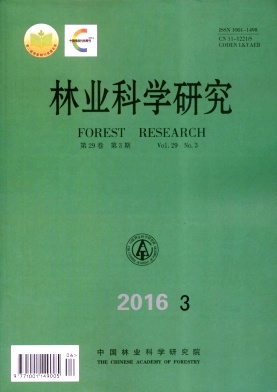|
[1]
|
梁维坚. 中国果树科学与实践[M]. 西安:陕西科学技术出版社, 2015.
|
|
[2]
|
吕跃东. 平欧杂交榛优良无性系抗寒性评价[D]. 哈尔滨:东北林业大学, 2008.
|
|
[3]
|
李春牛, 董凤祥, 王贵禧, 等. 平欧杂交榛抗抽条能力及抽条临界含水量研究[J]. 林业科学研究, 2010, 23(3):330-335.
|
|
[4]
|
赵天田, 王贵禧, 梁丽松, 等. 平榛ChWRKY2转录因子的克隆及在低温胁迫下的表达分析[J]. 林业科学研究, 2012, 25(2):144-149.
|
|
[5]
|
张丽, 贾志国, 马庆华, 等. 盐碱胁迫对平欧杂种榛生长及叶片内源激素含量的影响[J]. 林业科学研究, 2015, 28(3):394-401.
|
|
[6]
|
赵天田, 梁丽松, 马庆华, 等. 平榛ChWRKY28基因克隆及表达模式分析[J]. 林业科学研究, 2016, 29(2):250-255.
|
|
[7]
|
Mehlenbacher S A. Chilling requirements of hazelnut cultivars[J]. Scientia Horticulturae, 1991, 47:271-282. |
|
[8]
|
Weinberger J H. Chilling requirements of peach varieties[J]. Proceeding of the American Society for Horticultural Science, 1950, 56:122-128. |
|
[9]
|
王力荣, 朱更瑞, 方伟超, 等. 桃品种需冷量评价模式的探讨[J]. 园艺学报, 2003, 30(4):379-383.
|
|
[10]
|
Anderson J L, Seeley S D. Modelling strategy in pomology:development of the Utah models[J]. Acta Horticulturae, 1992, 313:297-306. |
|
[11]
|
李天忠, 张志宏. 现代果树生物学[M]. 北京:科学出版社, 2008.
|
|
[12]
|
吴光林. 果树生态学[M]. 北京:农业出版社, 1992.
|
|
[13]
|
王海波, 王孝娣, 王宝亮, 等. 设施葡萄常用品种的需冷量、需热量及2者关系研究[J]. 果树学报, 2011, 28(1):37-41.
|
|
[14]
|
王西成, 钱亚明, 赵密珍, 等.设施葡萄萌芽调控中需冷量和需热量及其相互关系[J]. 植物生理学报, 2014, 50(3):309-314.
|
|
[15]
|
Alburquerque N, García-Montiel F, Carrillo A, et al. Chilling and heat requirements of sweet cherry cultivars and the relationship between altitude and the probability of satisfying the chill requirements[J]. Environmental and Experimental Botany, 2008, 64:162-170. |
|
[16]
|
王海波, 刘凤之, 王宝亮, 等. 落叶果树的需冷量和需热量[J]. 中国果树, 2009(2):50-53.
|
|
[17]
|
陈茂铨, 叶伟其, 刘卓香, 等. 12个桃品种的花芽休眠需冷量和开花需热量[J]. 林业科学, 2012, 48(1):86-90.
|
|
[18]
|
王力荣, 朱更瑞, 左覃元. 中国桃品种需冷量的研究[J]. 园艺学报, 1997, 24(2):194-196.
|
|
[19]
|
Gariglio N, González Rossia D E, Mendow M, et al. Effect of artificial chilling on the depth of endodormancy and vegetative and flower budbreak of peach and nectarine cultivars using excised shoots[J]. Scientia Horticulturae, 2006, 108:371-377. |
|
[20]
|
Yamane H, Ooka T, Jotatsu H, et al. Expressional regulation of PpDAM5 and PpDAM6, peach (Prunus persica) dormancy-associated MADS-box genes, by low temperature and dormancy-breaking reagent treatment[J]. Journal of Experimental Botany, 2011, 62:3481-3488. |
|
[21]
|
Yamane H, Ooka T, Jotatsu H, et al. Expression analysis of PpDAM5 and PpDAM6 during flower bud development in peach (Prunus persica)[J]. Scientia Horticulturae, 2011, 129:844-848. |
|
[22]
|
Leida C, Conesa A, Llficer Q, et al. Histone modifications and expression of DAM6 gene in peach are modulated during bud dormancy release in a cultivar-dependent manner[J]. New Phytologist, 2012, 193:67-80. |
|
[23]
|
Leida C, Romeu J F, Garcia-Brunton J, et al. Gene expression analysis of chilling requirements for flower bud break in peach[J]. Plant Breeding, 2012, 131:329-334. |
|
[24]
|
Viti R, Ruiz A D, Egea J, et al. Effect of climatic conditions on the overcoming of dormancy in apricot flower buds in two Mediterranean areas:Murcia (Spain) and Tuscany (Italy)[J]. Scientia Horticulturae, 2010, 124:217-224. |
|
[25]
|
Campoy J A, Ruiz D, Cook N, et al. Clinal variation of dormancy progression in apricot[J]. South African Journal of Botany, 2011, 77(3):618-630. |
|
[26]
|
Hauagge & Cummins J N. Seasonal variation in intensity of bud dormancy in apple cultivars and related Malus species[J]. Journal of the American Society for Horticultural Science, 1991, 116:107-115. |
|
[27]
|
Hauagge R, Cummins J N. Relationships among indices for the end of bud dormancy in apple cultivars and related Malus species under cold winter conditions[J]. Journal of the American Society for Horticultural Science, 1991, 116:95-99. |
|
[28]
|
Ubi B E, Sakamoto D, Ban Y, et al. Molecular cloning of dormancy-associated MADS-box gene homologs and their characterization during seasonal endodormancy transitional phases of Japanese pear[J]. Journal of the American Society for Horticultural Science, 2010, 135(2):174-182. |
|
[29]
|
Couvillon G A, Erez A. Effect of level and duration of high temperatures on rest in the peach[J]. Journal of the American Society for Horticultural Science, 1985, 110:579-581. |
|
[30]
|
谭钺, 李玲, 李冬梅, 等. 设施桃萌芽调控中冷量与热量的关系[J]. 应用与环境生物学报, 2012, 18(5):728-733.
|





 DownLoad:
DownLoad: